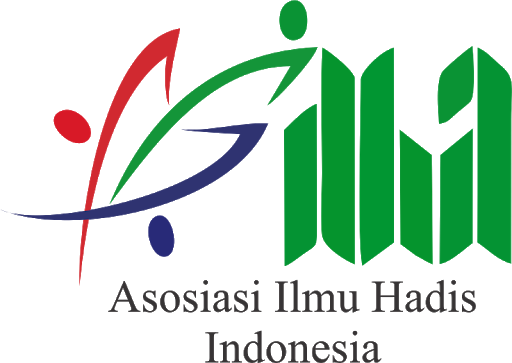Interpretation of the Meaning of Hadith about the Parable of the Date-Palm Tree with A Muslims through the Tahlili Method
Interpretasi Makna Hadis Tentang Perumpamaan Pohon Kurma Dengan Seorang Muslim Melalui Metode Tahlili
DOI:
https://doi.org/10.14421/livinghadis.2022.4003Keywords:
Illustration of Date-Palm; Tahlily Hadith; Syarah; Takhrij; Muslim PeopleAbstract
The date palm tree is considered a tree that has great privileges because of several advantages it has. From a physical point of view, dates are able to withstand various weather conditions. Meanwhile, from a non-physical perspective, dates have many benefits, both benefits derived from their content and other benefits that arise from the parts of dates. Furthermore, this study aims to discuss the hadith about the parable of the date palm tree with the personal of the Muslims. This parable cannot be separated from the similarity of the date palm tree with the personal of the Muslims which has implications for the advantages, virtues, and benefits of the Muslims for the surrounding environment. To see the extent of these similarities, the author uses a qualitative type of research with a descriptive-analytical method. With it, the researcher will interpret the meaning of the hadith text with the help of the tahlili hadith method. The formal object of this research is the study of hadith, while the material object is the hadith about the parable of the date palm tree in the history of Bukhari no. 59. The results and discussion of this research give rise to a result related to the teaching of aqidah and moral values in their relevance to faith and monotheism in Islam.
 Abstract viewed: 665 times
|
Abstract viewed: 665 times
|
 pdf downloaded = 916 times
pdf downloaded = 916 times
References
Al-Qur’anul Karim.
Ahmad, & Bin Ahmad Syamil. (2013). Keistimewaan kurma dalam Al-Qur ’an ditinjau dari perspektif ilmu kesehatan. Repository UIN Universitas Islam Negeri Sultan Syarif Kasim, 1–89. http://repository.uin-suska.ac.id/id/eprint/3021%0A
Al-Asqalani, I. H. (2000). Fath Al-Baari’ bi Syarh Shahih Al-Bukhari Juz 1 (Riyadh). Dar As-Salam.
Al-Asqalani, I. H. (2006). Fathul Baari’ Penj. Kitab Shahih Al-Bukhari, Juz 1. Pustaka Azzam.
Al-Idrusi, S. A. I. (2012). Miftahu Ar-Rahman fi Al-Mu’jam Al-Mufahras li Alfadzh Al-Qur’an. Dar Al-Kutub Al-Islamiyah.
An-Najjar, Z. (2011). Sains dalam Hadits (Mengungkapkan Fakta Ilmiah dari Kemukjizatan Hadits Nabi). Amzah.
Darmalaksana, W. (2020). Penelitian Hadis Metode Syarah Pendekatan Kontemporer: Sebuah Panduan Skripsi, Tesis, dan Disertasi. Diroyah: Jurnal Studi Ilmu Hadits. https://journal.uinsgd.ac.id/index.php/Diroyah/article/view/9468
Daud, M. (2015). Amthal al- Hadith Ibnu Hajar al-Asqalani (Studi Pemaknaan Hadis Perumpamaan Iman Dalam Kitab Fath al-Bari). In Tesis. http://digilib.uinsby.ac.id/36208/
Egi Tanadi Taufik. (2020). Epistemologi Syaraḥ Hadis di Perguruan Tinggi: Diskursus Genealogis Terhadap Transmisi dan Transformasi Metode Syaraḥ Hadis di Indonesia. Ushuluna: Jurnal Ilmu Ushuluddin, 6(2), 33–50. https://www.neliti.com/publications/338479/epistemologi-syaraḥ-hadis-di-perguruan-tinggi-diskursus-genealogis-terhadap-tran
Hakim, L. (2020). Prinsip Dan Metodologi Pemahaman Hadits. Wasathiyah : Jurnal Studi Keislaman, 1(1), 24–39. https://e-journal.stishid.ac.id/index.php/wasathiyah/article/view/64
Ilyas, A. dan L. O. I. A. (2019). Studi Hadits (Ontologi, Epistemologi dan Aksiologi) (cet. 1). Rajawali Pers.
Jamrah, S. A. (2002). Metode Tafsir Mawdhu’i (Sebuah Pengantar), terj. Bidayah fi At-Tafsir Al-Mawdhu’iy: Dirasah Manhajiyah Mawdhu’iyah (Cet: II). Raja Grafindo Persada.
Muhammad Anshori. (2017). Syarḥ Hadis dari Masa Ke Masa. Jurnal Al-Irfani: Jurnal Kajian Tafsir Hadits, 3(1), 1–32. http://ejournal.kopertais4.or.id/sasambo/index.php/alirfani/article/view/2873
Muhtador, M. (2016). Sejarah Perkembangan Metode dan Pendekatan Syarah Hadis. Riwayah, 2(2), 259–272. https://journal.iainkudus.ac.id/index.php/riwayah/article/view/3130
Muyassaroh, M. (2020). Khasiat buah Kurma bagi ibu bersalin dalam Alquran: studi analisis surah Maryam ayat 25 perspektif Mustafa al Maraghi. UIN Sunan Ampel Surabaya. http://digilib.uinsby.ac.id/42554/
Permana, D. (2022). METODE RASULULLAH SAW DALAM PENYAMPAIAN HADITS KAWMAWAIN: Studi Hadits Tahlili Dengan Perspektif Suggestopedia. DIRAYAH: Jurnal Ilmu Hadis, 2(2), 162–183. https://e-jurnal.stiqarrahman.ac.id/index.php/dirayah/article/view/75
Salim, A. M. (1999). Metodologi Tafsir: Sebuah Rekontruksi Epistemologi, memantapkan Keberadaan Ilmu Tafsir Sebagai Disiplin Ilmu. IAIN Alauddin.
Suryadi. (2002). Rekontruksi Metodologi Pemahaman Hadits (Wacana Studi Hadits Kontemporer). Tiara Wacana.
UIN Sunan Gunung Djati Bandung. (2020). Pedoman Penulisan Skripsi, Tesis dan Disertasi. UIN Sunan Gunung Djati Bandung.
Zahrah, N. S. (2020). Gharib al-Hadits Sebagai Embriologi Syarah Hadits dan Transformasinya. El-Afkar: Jurnal Pemikiran Keislaman Dan Tafsir Hadis, 9(1), 127–141. https://ejournal.iainbengkulu.ac.id/index.php/elafkar/article/view/2615
Zaman, D. N., Tarisa, D., Tanoto, F. P., Dalimunthe, R. P., & Ushuluddin, T. F. (2013). ANALISIS AIR SUCI DALAM KITAB SUBUL AL-SALAM MENGGUNAKAN METODE TAHLILI. https://www.researchgate.net/profile/Fakhri-Putra-Tanoto/publication/357420314_Analisis_Air_Suci_dalam_Kitab_Subul_Al-Salam_Menggunakan_Metode_Tahlili/links/61cd7dc7d45006081678ad94/Analisis-Air-Suci-dalam-Kitab-Subul-Al-Salam-Menggunakan-Metode-Tahlili.p
CD. Ensiklopedi Hadis – Kitab 9 Imam
Downloads
Published
Issue
Section
License
Copyright (c) 2022 Alfi Salwa

This work is licensed under a Creative Commons Attribution-ShareAlike 4.0 International License.
- Authors who publish with this journal agree to the following terms:
- Authors retain copyright and grant the journal right of first publication with the work simultaneously licensed under a Creative Commons Attribution License that allows others to share the work with an acknowledgement of the work's authorship and initial publication in this journal.
- Authors are able to enter into separate, additional contractual arrangements for the non-exclusive distribution of the journal's published version of the work (e.g., post it to an institutional repository or publish it in a book), with an acknowledgement of its initial publication in this journal.
- Authors are permitted and encouraged to post their work online (e.g., in institutional repositories or on their website) prior to and during the submission process, as it can lead to productive exchanges, as well as earlier and greater citation of published work.
















